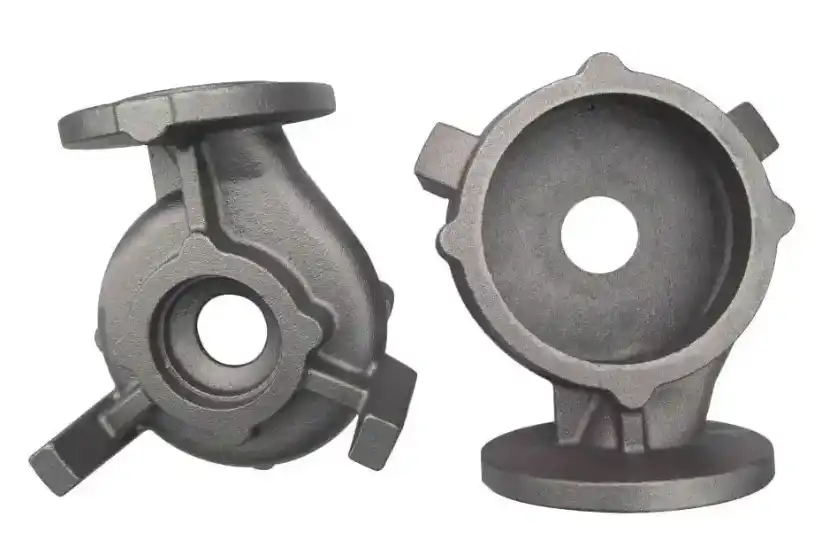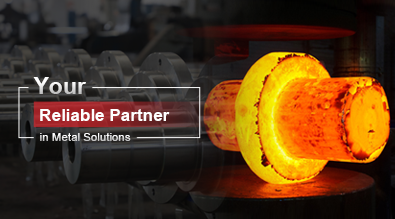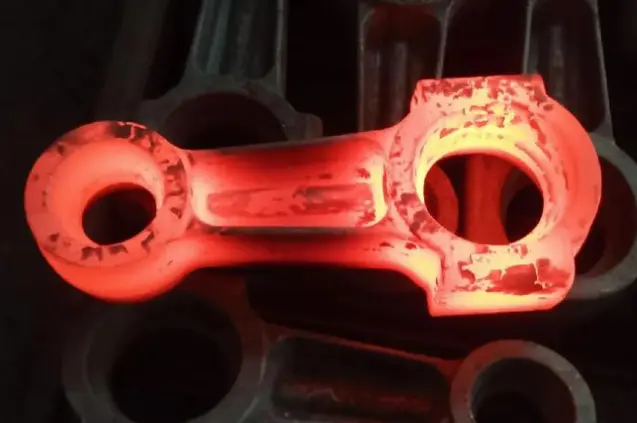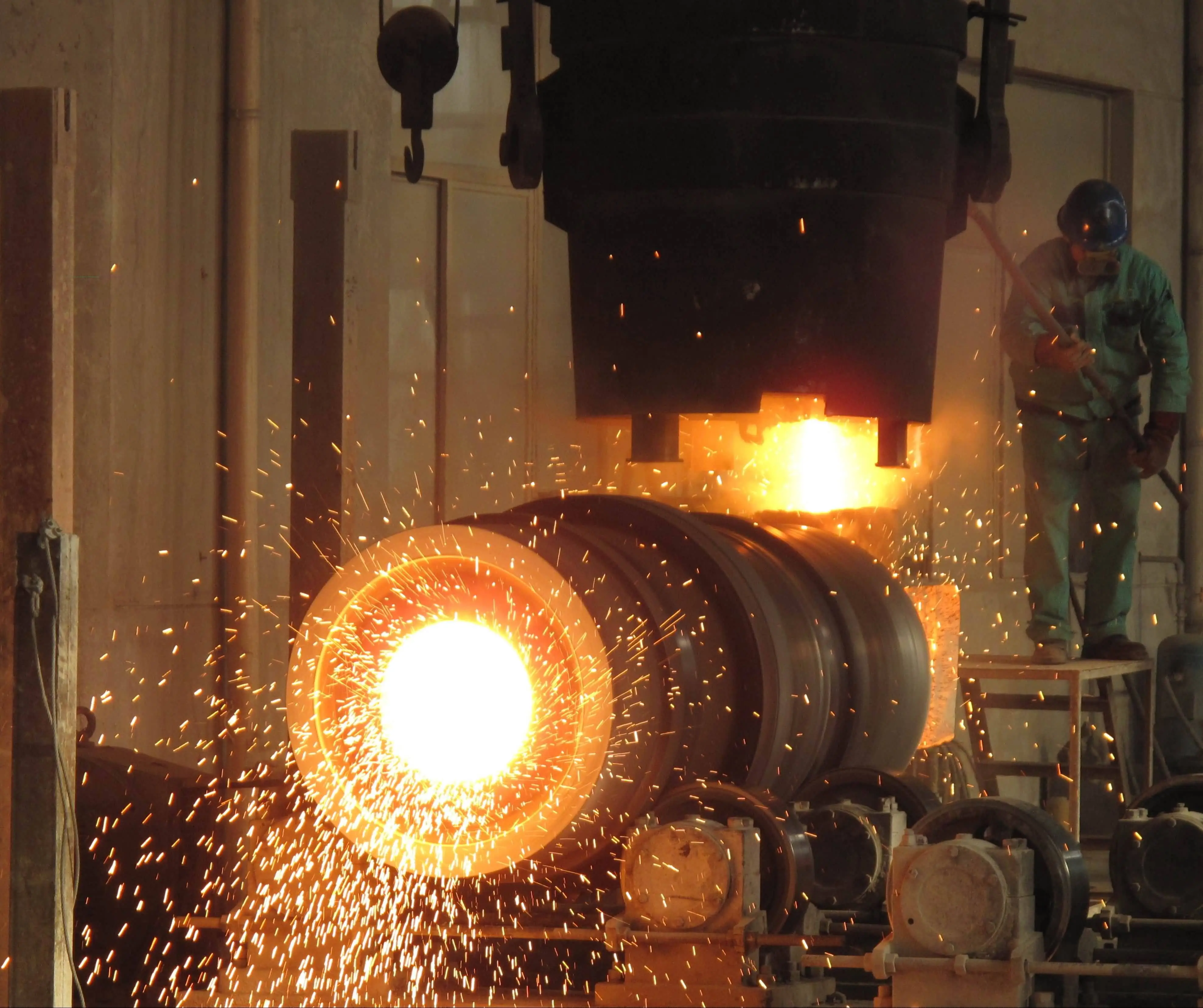What’s the Difference Between Cold Forging Parts and Aluminium Casting Part?
In the realm of metal manufacturing, two prominent processes stand out: cold forging and aluminium casting. Both techniques are widely used in various industries to create components with specific properties and characteristics. Cold forging involves shaping metal at room temperature through compressive forces, while aluminium casting entails pouring molten aluminium into molds to achieve the desired shape. Understanding the differences between these methods is crucial for manufacturers and engineers when deciding which process best suits their needs. This blog post will delve into the key distinctions between cold forging parts and aluminium casting parts, exploring their respective advantages, limitations, and ideal applications. By examining factors such as material properties, production efficiency, cost-effectiveness, and final product quality, we aim to provide a comprehensive comparison that will help readers make informed decisions in their manufacturing processes.

What are the key advantages of aluminium casting parts over cold forging?
Complex Geometries
Aluminium casting parts offer significant advantages when it comes to producing complex geometries. Unlike cold forging, which is limited by the constraints of metal flow and die design, aluminium casting allows for intricate shapes and details to be created with relative ease. Because they can be designed in so many ways, aluminum casting parts are perfect for parts that need complicated internal holes, undercuts, or thin-walled sections. It might be possible to save time and money on production by not having to do extra steps of cutting or putting things together if complex forms can be made in a single casting process. Moreover, aluminium casting parts can incorporate features such as cooling channels or internal reinforcements that would be difficult or impossible to achieve through cold forging alone.
Weight Reduction
One of the most significant advantages of aluminium casting parts is their potential for weight reduction in final products. Aluminium is inherently lighter than many other metals used in manufacturing, and the casting process allows for the creation of hollow or thin-walled components that further reduce weight without compromising structural integrity. For industries like aircraft and automotive, where lowering total vehicle weight can lead to better fuel economy and performance, this ability to save weight makes aluminum casting parts very appealing. Additionally, engineers can find the best balance between strength and weight by fine-tuning the wall thickness and internal structure of aluminum casting parts through the cold forging process. This makes parts that are both light and long-lasting.
Cost-Effectiveness for Large Production Runs
When it comes to large production runs, aluminium casting parts often prove to be more cost-effective than their cold forged counterparts. The initial tooling costs for aluminium casting molds may be higher, but these costs are quickly amortized over large production volumes. Once the molds are created, the casting process itself is relatively quick and efficient, allowing for high-volume production with minimal labor input. This scalability makes aluminium casting parts an economical choice for mass-produced components. Furthermore, the casting process generates less material waste compared to cold forging, as excess material can be easily recycled and reused. This efficiency in material usage contributes to overall cost savings, especially when dealing with expensive alloys or large production quantities.
How does the production process differ between cold forging and aluminium casting?
Material Preparation
The material preparation stage for cold forging and aluminium casting parts differs significantly. In cold forging, the process typically begins with metal billets or blanks that are cut to specific sizes and shapes. These pieces are often preheated to increase their malleability, although the temperature remains below the metal's recrystallization point. On the other hand, aluminium casting parts require the metal to be completely melted. This involves heating aluminium ingots or recycled material in a furnace until they reach a liquid state. The molten aluminium is then carefully monitored and sometimes treated to remove impurities or adjust its composition. This fundamental difference in material state – solid versus liquid – sets the stage for the distinct processes that follow and ultimately influences the properties of the final products.
Shaping Mechanism
The shaping mechanism is perhaps the most distinctive aspect that separates cold forging from aluminium casting parts production. Cold forging relies on the principle of plastic deformation, where the metal is shaped through the application of intense pressure and force. This process typically involves a series of dies that progressively form the metal into the desired shape. The metal's grain structure is altered during this process, often resulting in improved strength and durability. In contrast, aluminium casting parts are shaped by pouring molten metal into pre-formed molds. The liquid aluminium fills the mold cavity, taking on its shape as it cools and solidifies. This method allows for greater complexity in part design but may result in a different grain structure compared to forged parts. The choice between these shaping mechanisms can have significant implications for the final product's properties and performance.
Post-Processing Requirements
The post-processing requirements for cold forged and aluminium casting parts can vary considerably. Cold forged parts often emerge from the forging process with a near-net shape, requiring minimal additional machining or finishing. But they might need to be heated to get rid of internal stresses or change the way the material behaves. On the other hand, things made from aluminum casting usually need more work after they are cast. Some of the things that can be done are gates and risers, which remove extra material from the casting, heat treatment to improve the mechanical properties, and cutting to get the finished sizes and finishes on the surface. Also, aluminum casting parts might need to be tested under pressure to make sure they are strong, especially parts that are meant to hold fluids or gases. It is important to think about the type and amount of post-processing when deciding between cold forging and aluminum casting for a certain application because it can have a big effect on the total output time and cost.
What industries benefit most from using aluminium casting parts?
Automotive Sector
The automotive industry is one of the primary beneficiaries of aluminium casting parts. Aluminum is a great material for making vehicles lighter because it is very light. This means that cars and trucks use less gas and pollute less. Cast aluminum parts are used to make many engine parts, such as cylinder heads, engine blocks, and transmission housings. These parts can have complicated shapes because they are cast. This lets you make designs that work better and use less cooling power. Also, structural parts like suspension arms and frame parts use parts that are made out of aluminum. In these cases, their high strength-to-weight ratio comes in handy. Because casting methods can make a lot of these parts, they are good for the auto business, which needs to make a lot of them. Because of this, casting aluminum is a cheap way to make many parts for cars.
Aerospace Applications
The aerospace industry heavily relies on aluminium casting parts due to their exceptional combination of lightweight properties and strength. A lot of airplane parts, like wing spars, body frames, and landing gear parts, are made from aluminum casts. With casting, you can make hollow, complicated shapes that are both light and strong. For planes to go fast and use little fuel, these parts are important. Cast aluminum parts are also used in jet engines because they last a long time and can handle high temperatures. When used in airplanes, where tight limits and regularity are needed for safety and performance, precision is very important. This is the best place for metal casting and the cold forging process. The aerospace business is also becoming more concerned with the environment, and the fact that aluminum can be recovered fits in with that. Because of this, casting parts out of metal is an eco-friendly way to make airplanes.
Consumer Electronics
More and more, the buyer merchandise trade is utilizing aluminum casting parts for a wide extend of assignments. Aluminum is incredible for making the cases and outlines for contraptions since it is light and doesn't spread warm. In the outlines of smartphones, computers, and tablets, aluminum casting parts are utilized a part. These parts make things see great, final longer, and work well with warm. People need apparatuses that are lean, light, and simple to carry, and being able to make metal into structures with lean dividers is exceptionally supportive for making them. Metal castings are too utilized to make warm sinks for electrical parts. These utilize the awesome warm exchange of metal to offer assistance keep things going at the right temperature. Because the strategy is liquid, when you make something, you can include complex interior highlights and settling focuses. Because of these changes, it's easier to put things together and gadgets work better in general.
Conclusion
In conclusion, the choice between cold forging parts and aluminium casting parts depends on various factors including the desired product characteristics, production volume, and cost considerations. Cold forging excels in producing high-strength components with excellent grain structure, while aluminium casting offers unparalleled flexibility in design and is particularly suited for lightweight, complex parts. Both processes have their place in modern manufacturing, with aluminium casting parts finding widespread use in industries such as automotive, aerospace, and consumer electronics due to their unique combination of properties. As technology advances, both methods continue to evolve, offering improved efficiency and quality. Ultimately, the decision between cold forging and aluminium casting should be based on a thorough analysis of the specific requirements of each project, taking into account factors such as material properties, production scale, and end-use applications.
Shaanxi Welong Int'l Supply Chain Mgt Co.,Ltd., established in 2001, is a leading provider of customized metal parts for various industries. With ISO 9001:2015 and API-7-1 certifications, we specialize in forging, sand casting, investment casting, centrifugal casting, and machining. Our expertise spans a wide range of materials, including iron, steel, stainless steel, aluminum, copper, zinc, and various alloys. We offer comprehensive services from design to delivery, ensuring cost-effective solutions and high-quality products. With a global customer base spanning over 100 clients in 20+ countries, we're committed to being a leader in the international supply chain and advancing China's intelligent manufacturing. For inquiries, please contact us at info@welongpost.com.
FAQ
Q: What is the main difference between cold forging and aluminium casting?
A: Cold forging shapes metal at room temperature using pressure, while aluminium casting involves pouring molten aluminium into molds.
Q: Which process is better for complex geometries?
A: Aluminium casting is generally better for complex geometries due to its ability to create intricate shapes and internal features.
Q: Are cold forged parts stronger than aluminium cast parts?
A: Cold forged parts often have higher strength due to the improved grain structure resulting from the forging process.
Q: Which industries benefit most from aluminium casting parts?
A: The automotive, aerospace, and consumer electronics industries benefit significantly from aluminium casting parts.
References
1. Smith, J. D. (2018). Advances in Metal Forming Processes: Cold Forging and Casting Compared. Journal of Materials Engineering and Performance, 27(4), 1721-1735.
2. Johnson, A. R., & Thompson, L. K. (2019). Aluminium Casting Technologies: Innovations and Applications in Modern Manufacturing. International Journal of Metalcasting, 13(2), 298-312.
3. Brown, M. E. (2020). Cold Forging vs. Aluminium Casting: A Comprehensive Analysis for Industrial Applications. Materials Science and Engineering: A, 772, 138-152.
4. Lee, S. H., & Park, K. T. (2017). Comparative Study of Mechanical Properties: Cold Forged and Cast Aluminium Alloys. Materials & Design, 128, 84-97.
5. Garcia-Romeu, M. L., & Ciurana, J. (2021). Sustainability Aspects of Cold Forging and Aluminium Casting Processes in the Automotive Industry. Journal of Cleaner Production, 285, 124-137.
6. Williams, R. D., & Chen, X. (2016). Microstructural Analysis of Cold Forged and Cast Aluminium Components: Implications for Performance and Durability. Acta Materialia, 112, 76-89.

Share your inquiry, get the quotation accordingly!

China WELONG- Your Reliable Partner in Metal Solutions

